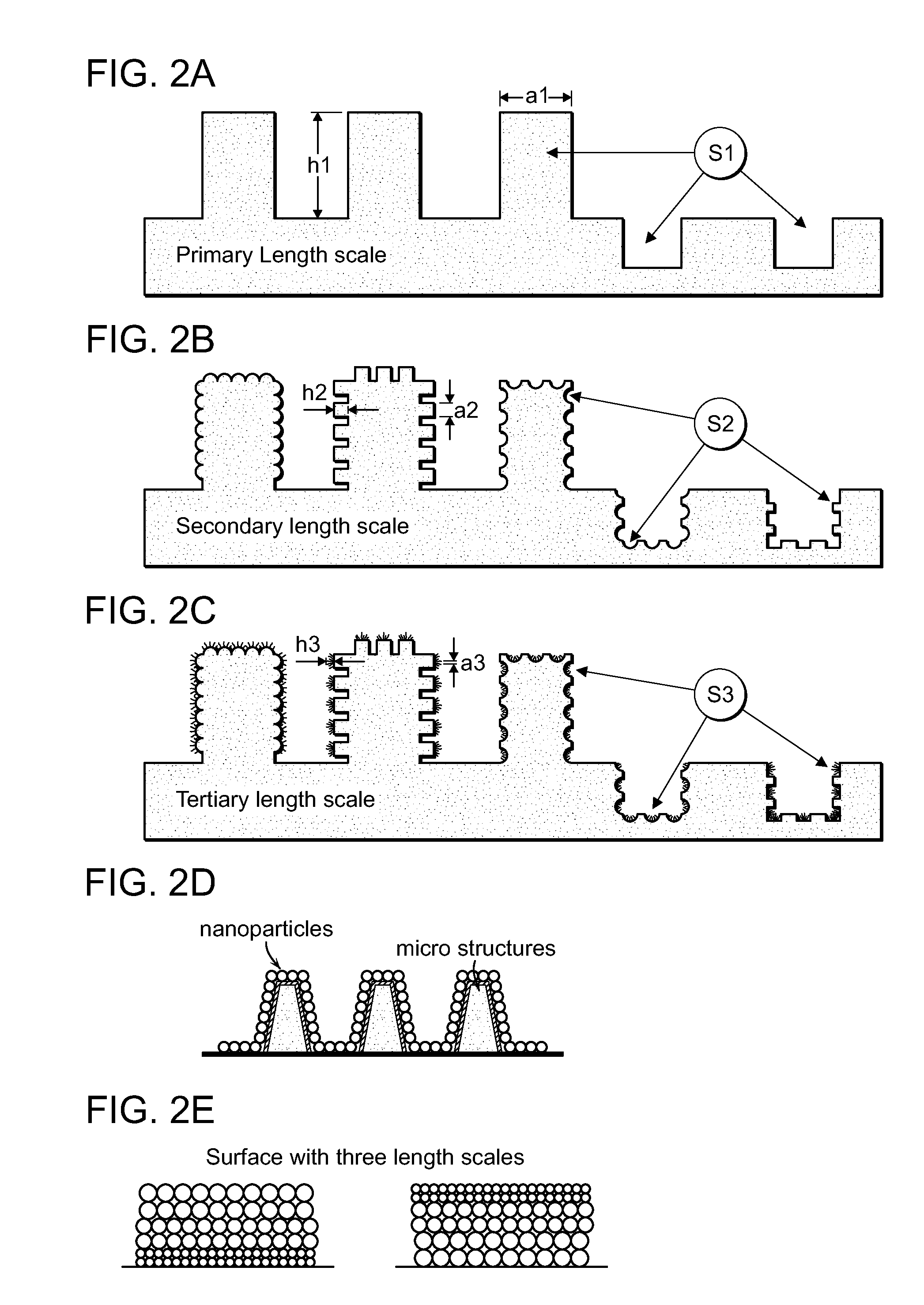Superwetting surfaces for diminishing leidenfrost effect, methods of making and devices incorporating the same
a surface and superwetting technology, applied in the field of superwetting surfaces for diminishing the leidenfrost effect, can solve the problems of classical catastrophic kink instability, failure of the device, and high surface temperature, and achieve the effects of increasing the leidenfrost temperature, and maximizing the leidenfrost temperatur
- Summary
- Abstract
- Description
- Claims
- Application Information
AI Technical Summary
Benefits of technology
Problems solved by technology
Method used
Image
Examples
Embodiment Construction
[0020]First, some of the theory on which the present invention is based will be discussed. Superwetting nanostructures can continuously allow droplets to rewet a surface and prevent vapor film formation as shown in FIG. 1. FIG. 1 shows the effect of surface wettability on rewetting. In FIG. 1a, partial surface wetting causes a vapor bubble to stick to the surface and prevent rewetting. As shown in FIG. 1b, superwetting surfaces disclosed herein can easily allow liquid to rewet a surface and forces a vapor bubble to detach from the surface. This increased rewetting along with the increased nucleation sites will significantly increase the maximum heat flux and Leidenfrost temperatures and therefore prevent vapor-film formation, boiling transition, and “dry-out” conditions to occur. Furthermore, the superwetting nature of the surface could increase the droplet rewetting Leidenfrost temperature limit and enhance heat transfer during droplet or liquid jet impingement on the surface in th...
PUM
 Login to View More
Login to View More Abstract
Description
Claims
Application Information
 Login to View More
Login to View More - R&D
- Intellectual Property
- Life Sciences
- Materials
- Tech Scout
- Unparalleled Data Quality
- Higher Quality Content
- 60% Fewer Hallucinations
Browse by: Latest US Patents, China's latest patents, Technical Efficacy Thesaurus, Application Domain, Technology Topic, Popular Technical Reports.
© 2025 PatSnap. All rights reserved.Legal|Privacy policy|Modern Slavery Act Transparency Statement|Sitemap|About US| Contact US: help@patsnap.com



